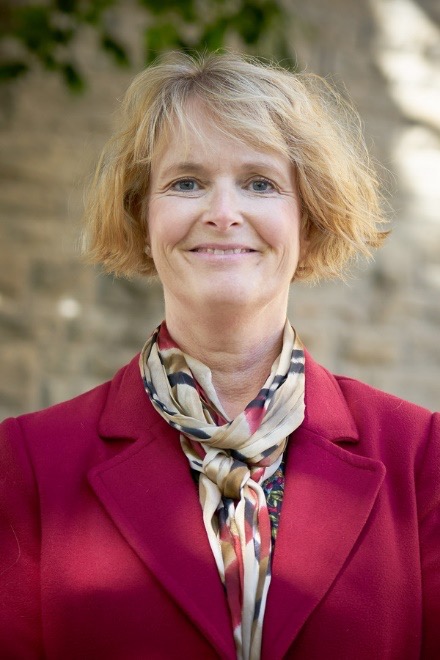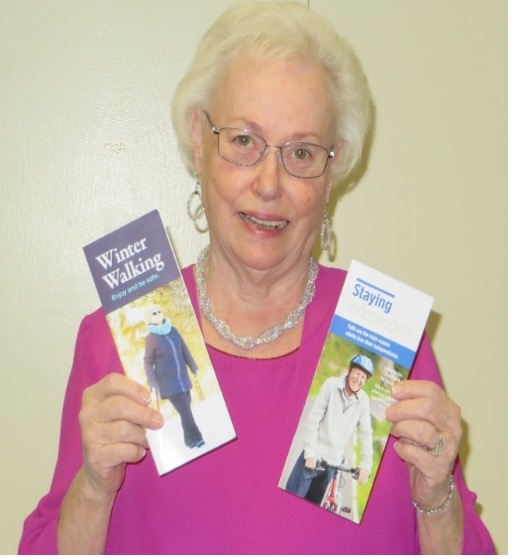We want to rock, not roll: maybe with a little help
Available in English and French.
We want to rock, not roll: maybe with a little help
By Marguerite Oberle Thomas, RN, BScN and Dr. Susan Hunter
We were the coolest generation. We had the best music, the best hair and lots of peace and love. We had it all, just like Bogie and Bacall. Now, we may need to get a little help from our friends.
The same people who remember Woodstock may not now dream about being on that farm, climbing that hill. Today we love our creature comforts. However, we’re fortunate that we still can stay on the move with the help of modern technology and devices.
As we are fortunate enough to grow older, we may notice a shift in our gait. We don’t necessarily do that brisk and purposeful walk of our youth, rushing here and there. Now, we slow down a bit and look for hazards that might cause us to trip or to interfere with our forward path. What we do is still very meaningful; we just need to do it somewhat differently. That can sometimes mean being prescribed a gait aid, such as a cane or four-wheeled walker. About one quarter of older adults in Canada use a gait aid.
Mobility, our ability to move freely and independently through our home and community, is fundamental to successful and active aging. Mobility disability though is common in adults over the age of 65, affecting one third of older adults living in the community who report difficulty with climbing stairs and walking.
Osteoarthritis of the hip and knee affects about 45 per cent of Canadians over the age of 60. This condition causes joint pain and stiffness, which can lead people to restrict their activities. A cane can relieve pain by reducing stresses on the affected joint: if you use one cane, use it in the hand opposite to the affected leg to reduce pain.
Also, as we get older, many body functions change slowly with time; our sight, our hearing, our muscles, and our nervous system can all decline, and these can contribute to mobility disability. Changes in our gait includes walking slower, reduced or stiff movement in our hips, knees and ankles, which means we take shorter steps. We become more unsteady. A gait aid can compensate by providing extra support.
If you’re having problems with walking, it’s important to see a healthcare professional. Options to improve your gait, comfort and continued engagement and participation include a health review and possible recommendation to use a gait aid.
Your gait aid should provide the appropriate amount of support, be customized for you and meet your individual needs for your life and circumstances. It’s important to be aware that the incorrect type, inappropriate size, unsafe use and lack of mechanical maintenance are all problems that may mean you don’t get the benefits you should. When a healthcare professional helps you choose your new gait aid, all these factors are considered to ensure that, with a little help from our friends, you can still have it all with your independence and quality of life maintained or improved.
Dr. Susan Hunter is an Associate Professor in the School of Physical Therapy at the University of Western Ontario. She has been a physical therapist for 30 years and completed her PhD in 2009 evaluating fall risk in community-dwelling older adults. Dr. Hunter’s research interests are the rehabilitation of older adults and their experience of falls, frailty and mobility decline. She is the Vice-President of the International Association of Physiotherapists Working with Older People (IPTOP). She also developed the Safe Use of Mobility Aids Checklist (SUMAC), a new assessment scale for people with dementia who use a 4-wheeled walker. The tool is free for use and can be accessed at the research website of Dr. Susan Hunter, School of Physical Therapy at the University of Western Ontario.

Marguerite Oberle Thomas, RN., BScN., is the Consultant Liaison for the Fall Prevention Community of Practice - Loop sponsored by Parachute. She is also a senior devoted to preventing injuries and a former caregiver.

